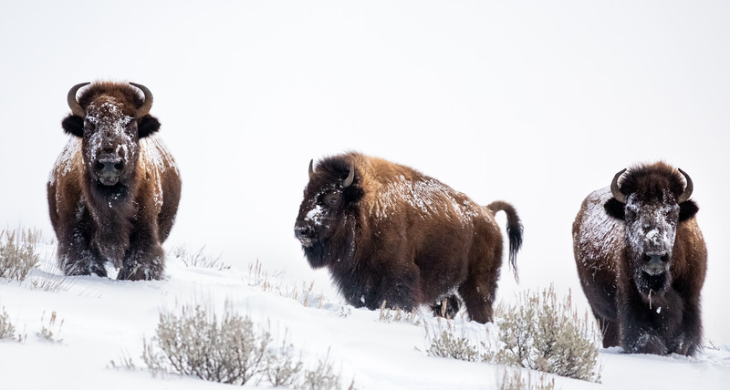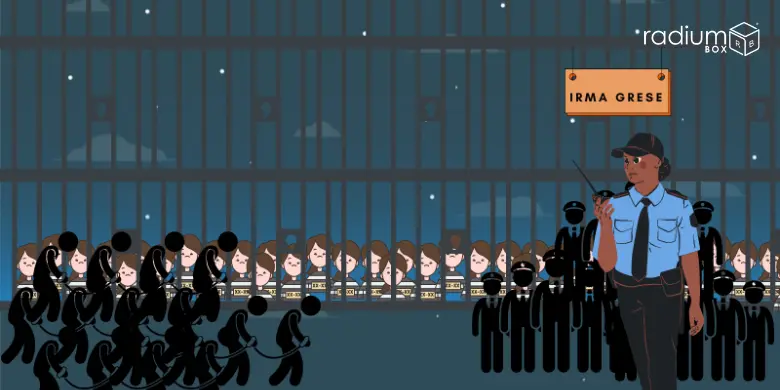First, we should understand what is snow storm?
A snowstorm is a type of winter storm characterized by heavy snowfall. It can also include strong winds, which cause blowing & drifting of the snow. These storms can be dangerous & cause power outages, transportation disruptions, & other problems. Snowstorms can also be accompanied by freezing temperatures, which can make it difficult for people & animals to survive outside.
What are the main reasons, behind the Snow Storm?
snowstorms are caused by low-pressure that brings cold air & moisture together. The combination of these two creates the perfect conditions for snowfall. The amount of snowfall can vary widely, from a light dusting to heavy snowfall. Snowstorms can also be classified by their severity, with a “light” snowstorm bringing less than 6 inches of snow, a “medium” snowstorm bringing 6 to 12 inches, & a “heavy” snowstorm bringing more than 12 inches.
In addition to the snowfall, winds can also play a significant role in snowstorms. Strong winds can cause blowing & drifting of the snow, making it difficult for people to see & travel. The winds can also cause power outages by knocking down power lines & tree branches.
Snowstorms can have a significant impact on transportation, as roads & highways can become icy & impassable. Air travel is also often disrupted during snowstorms, with flights being cancelled or delayed.
Overall, snowstorms can be dangerous & disruptive, & it’s important to be prepared for one by having emergency supplies, such as food, water, & warm clothing, on hand.
What damages are related to Snow Storm?
Another important aspect of snowstorms is the potential for snow accumulation, which can lead to structural damage to buildings, cars, & other objects. Snow accumulation can also cause roof collapses, especially on flat or low-sloped roofs. It’s important for property owners to remove snow & ice from their roofs to prevent this type of damage.
In addition, heavy snowfall can cause flooding in coastal areas, known as coastal flooding or storm surge, when combined with high tide. The weight of the snow can also cause power outages & communication disruptions, making it difficult for people to contact emergency services.
It’s also important to note that prolonged exposure to cold temperatures & snow can be dangerous for people, especially the elderly, young children, & those with certain medical conditions. Hypothermia & frostbite are two potential health risks associated with snowstorms.
Finally, it’s worth noting that snowstorms can also have an impact on the environment. Heavy snowfall can disrupt ecosystems & cause problems for wildlife, particularly in areas where animals are not well adapted to heavy snowfall.
It’s important to keep track of snowstorm forecasts & to take appropriate safety measures before & during a storm. Local authorities usually provide updates & advice about the storm, such as school closures, travel warnings & evacuation orders.
Are snowstorms common in United States of America?
In the United States, snowstorms are a common occurrence during the winter months, particularly in the northern & mountainous regions of the country. Some of the most significant snowstorms in US history include the “Blizzard of 1888,” which affected the northeastern United States & is considered one of the most severe snowstorms to ever hit the region, & the “Knickerbocker Storm” of 1922 which hit Washington D.C, causing the collapse of the Knickerbocker Theater roof killing 98 people.
The National Weather Service (NWS) is the government agency responsible for issuing forecasts & warnings for snowstorms in the United States. They issue winter storm watches & warnings to alert the public of potential snowstorms & provide forecasts & updates on the storm’s progress.
The Federal Emergency Management Agency (FEMA) also plays a role in responding to snowstorms, providing assistance to state & local governments & coordinating the efforts of various federal agencies.
Overall, snowstorms are a common & significant weather event in the United States, & various government agencies work together to provide forecasts, warnings, & assistance to the public.
Why did Buffalo get impacted most?
Buffalo a place in New York is located in the western part of the state, near Great Lakes, & as such, it is known for its heavy lake-effect snowfall during the winter seasons. The city & nearby areas are particularly vulnerable to lake-effect snowstorms, which are caused by cold air moving over the relatively warm waters of the Great Lakes, picking up moisture & depositing it as snow on the leeward side of the lakes.
In November of 2014, Buffalo was hit by one of the most significant lake-effect snowstorms in recent history, known as the “November 2014 Great Lakes snowstorm”. The storm produced over seven feet of snow in some areas, causing widespread power outages, transportation disruptions, & other problems. It was considered one of the worst snowstorms in Buffalo’s history.
Lake-effect snowstorms in Buffalo can be particularly dangerous because of the high winds. It cause problem in traveling.
The National Weather Service (NWS) office in Buffalo issues forecasts & warnings for lake-effect snowstorms. Overall as a NPO / NGO Radium Box Foundation advised residents of Buffalo to be prepared for heavy snowfall & dangerous conditions during the winter months.




